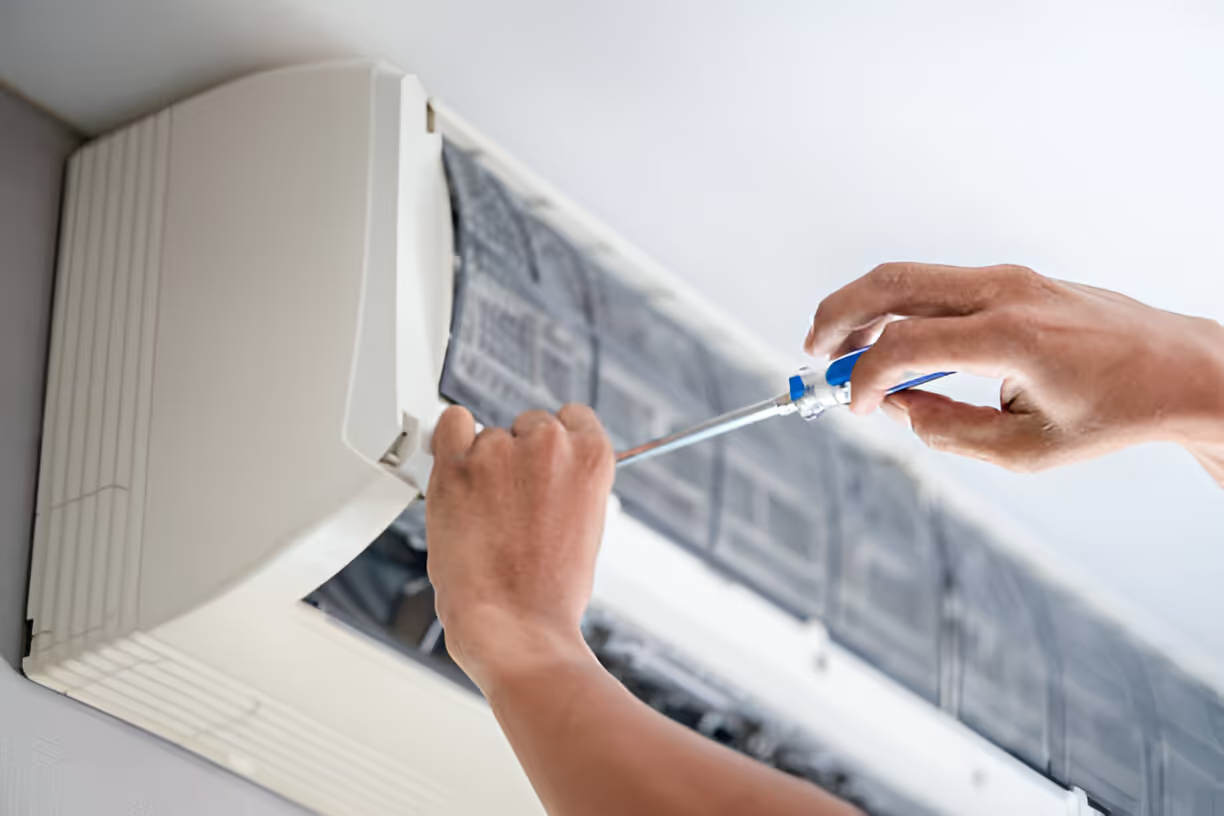Residential Air Conditioner in Santan Valley, AZ
Summer temperatures in Santan Valley routinely climb into triple digits and monsoon storms bring dust, pollen, and humidity spikes. A properly sized, maintained, and installed residential air conditioner is essential for comfort, indoor air quality, and energy bills.

Why proper AC service matters in Santan Valley
- Prolonged high heat stresses compressors and refrigerant systems, increasing failure risk.
- Dust and monsoon debris reduce coil efficiency and clog filters faster.
- Homes with inadequate attic insulation or leaky ducts lose cooled air, driving up costs.
- Energy-efficient equipment and correct sizing deliver measurable savings in this cooling-dominant climate.
Common residential AC issues in Santan Valley
- Weak or warm airflow: often caused by refrigerant leaks, failing blower motors, or duct restrictions.
- Short cycling: frequent on/off cycles that indicate oversized units, thermostat issues, or electrical faults.
- High energy bills: aging equipment with low SEER ratings, dirty coils, or leaky ducts.
- Strange noises or odors: failing bearings, loose components, or mold in the system.
- System not starting: capacitor or contactor failure, control board problems, or safety switch activation after overheating.
Services offered (repair, replacement, new installation)
- Repair: diagnostics to identify root cause, replacement of worn parts (capacitors, motors, contactors, sensors), refrigerant leak detection and repair, and coil cleaning. Repairs prioritize restoring safe, efficient operation while considering the unit’s remaining life.
- Replacement: professional assessment (including Manual J sizing) to determine when replacement is more cost-effective than repeated repairs. Replacement options include matched outdoor/indoor systems, upgraded condensers, and variable-speed air handlers.
- New installations: full-service installation for new construction or retrofits, including line-set runs, pad and condenser placement, electrical upgrades, and thermostat integration.
How proper system sizing and efficiency recommendations work
- Manual J load calculation: the only reliable way to size a system for your home, accounting for square footage, insulation, window orientation, occupancy, and local climate. Oversized or undersized units cause comfort and efficiency problems.
- SEER ratings and ENERGY STAR: in hot Arizona climates, higher SEER equipment (16 SEER and above) tends to deliver substantial cooling-cost savings. Variable-speed compressors and two-stage systems improve humidity control and comfort.
- Right-sizing considerations for Santan Valley: because homes face high cooling loads and significant solar gain, prioritize accurate shading, attic insulation, and ductwork condition when choosing capacity.
Ductwork assessment and mini-split options
- Ductwork checks: inspect for leaks, poor insulation (especially in attic runs), improper sizing, and blockages. Duct sealing and balancing can restore airflow and curb energy losses of 20% or more.
- When to consider duct sealing or replacement: signs include uneven room temperatures, dust from vents, and high runtime with little cooling effect.
- Ductless mini-splits: ideal for room additions, older homes without ducts, or targeted zoning. Mini-splits provide high efficiency, flexible installation, and quiet operation. In Santan Valley, multi-zone mini-splits can be an efficient way to cool occupied rooms without conditioning unused space.
Typical warranty and financing considerations
- Service warranties: many residential service providers offer a workmanship warranty (commonly 1 year parts and labor) on repairs and installations. Manufacturer warranties vary by unit and component—compressors often carry longer coverage when registered.
- Manufacturer warranties: new equipment typically includes a manufacturer parts warranty that can range 5 to 12 years depending on brand and registration. Condenser and compressor warranties are often the most substantial.
- Financing options: many homeowners use low-interest financing or payment plans for replacement installations, especially for high-efficiency upgrades. Look for transparent terms, pre-approval processes, and written estimates that separate equipment, labor, and permit costs.
Homeowner-focused maintenance plans
- What a good maintenance plan includes:
- Twice-yearly inspections (pre-summer and post-summer), cleaning coils and condensate lines, checking refrigerant charge, testing electrical components, and measuring airflow.
- Priority scheduling, flat-rate diagnostic credits, and documentation of system condition and past service.
- Seasonal tune-ups to extend equipment life, maintain warranty requirements, and reduce the risk of mid-summer failures.
- Benefits for Santan Valley homeowners:
- Reduced emergency calls during peak heat, improved energy efficiency, and better humidity control during monsoon season.
- Cleaner indoor air through regular filter changes and coil cleaning, important in dusty conditions.
Booking and vetting certified technicians — homeowner checklist
- Verify certifications: look for EPA Section 608 certification for refrigerant handling and NATE or equivalent HVAC credentials for technicians.
- Licensing and insurance: confirm the contractor is licensed, bonded, and carries general liability and worker’s compensation insurance.
- Written estimates and scope: get a detailed, written estimate that includes Manual J sizing results, system specifications (SEER, matched components), and a clear breakdown of labor and materials.
- Warranty and service documentation: ask for workmanship warranty terms and how manufacturer warranty registration is handled.
- Diagnostic transparency: choose technicians who provide clear diagnostics, show component tests, and explain repair vs replacement reasoning in plain language.
- Local experience: prefer technicians familiar with Santan Valley roofing, attic conditions, and typical installation challenges in the area.
What to expect during a professional visit
- Initial walkthrough and system history review.
- Visual inspection of outdoor condenser, indoor coil, blower, ductwork, and thermostat.
- Diagnostic testing: pressure/readings, electrical testing, and airflow measurement as needed.
- Written findings and recommended options: repair with estimated life extension, or replacement with tailored equipment and efficiency choices.
Long-term benefits and simple homeowner tips
- Benefits of timely, professional AC service: longer equipment life, lower seasonal energy costs, fewer emergency repairs, and consistent comfort during Santan Valley’s hottest months.
- Quick homeowner tips:
- Replace filters monthly during heavy-use seasons.
- Keep condenser area clear of vegetation and debris.
- Shade outdoor units where practical without restricting airflow.
- Seal attic access and improve attic insulation to reduce cooling loads.
A properly selected and maintained residential air conditioner pays off quickly in Santan Valley’s extreme heat. Focusing on correct sizing, efficient equipment, ductwork integrity, and routine maintenance will protect comfort and reduce operational costs over the unit’s lifetime.
Other Services






